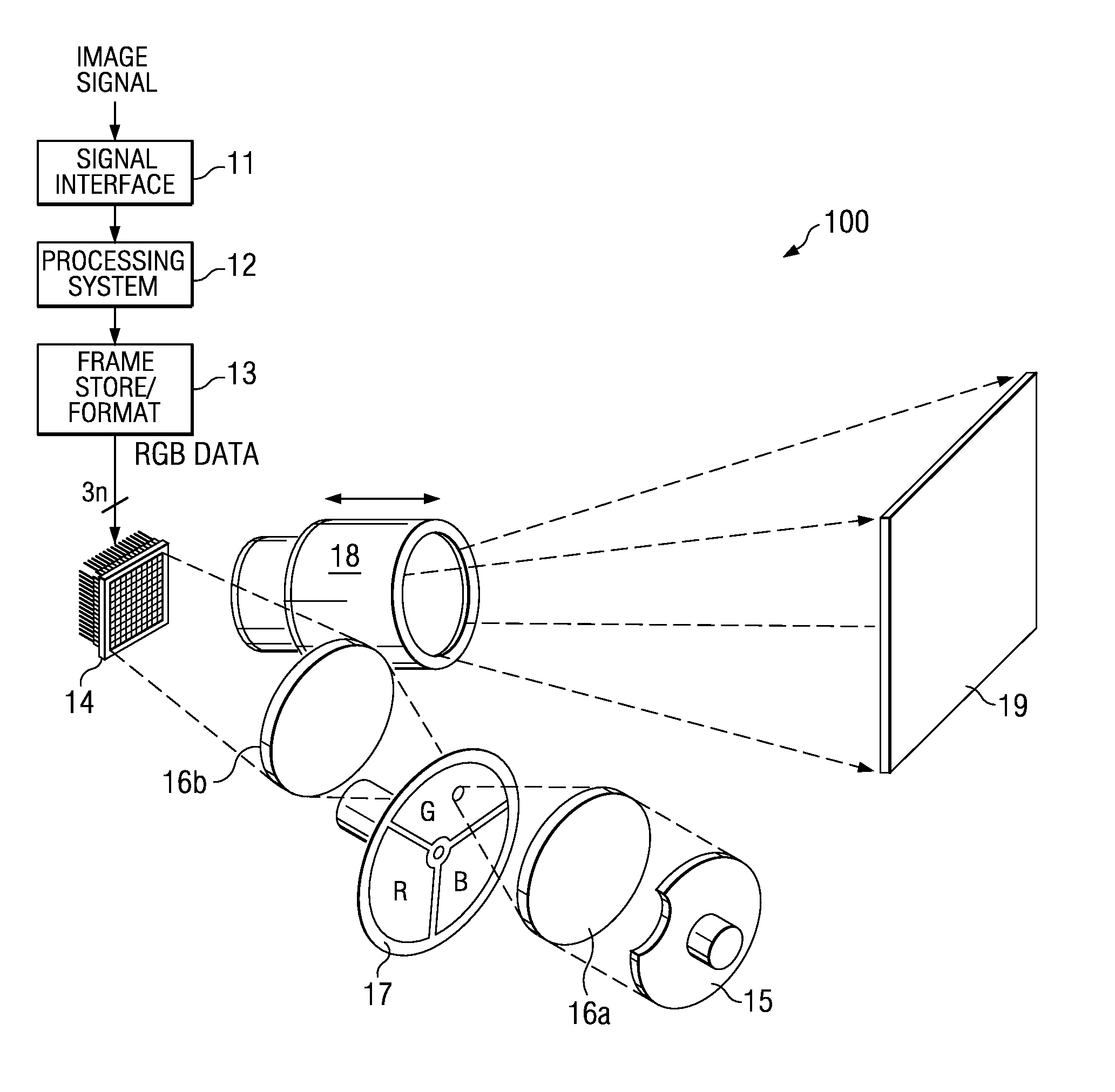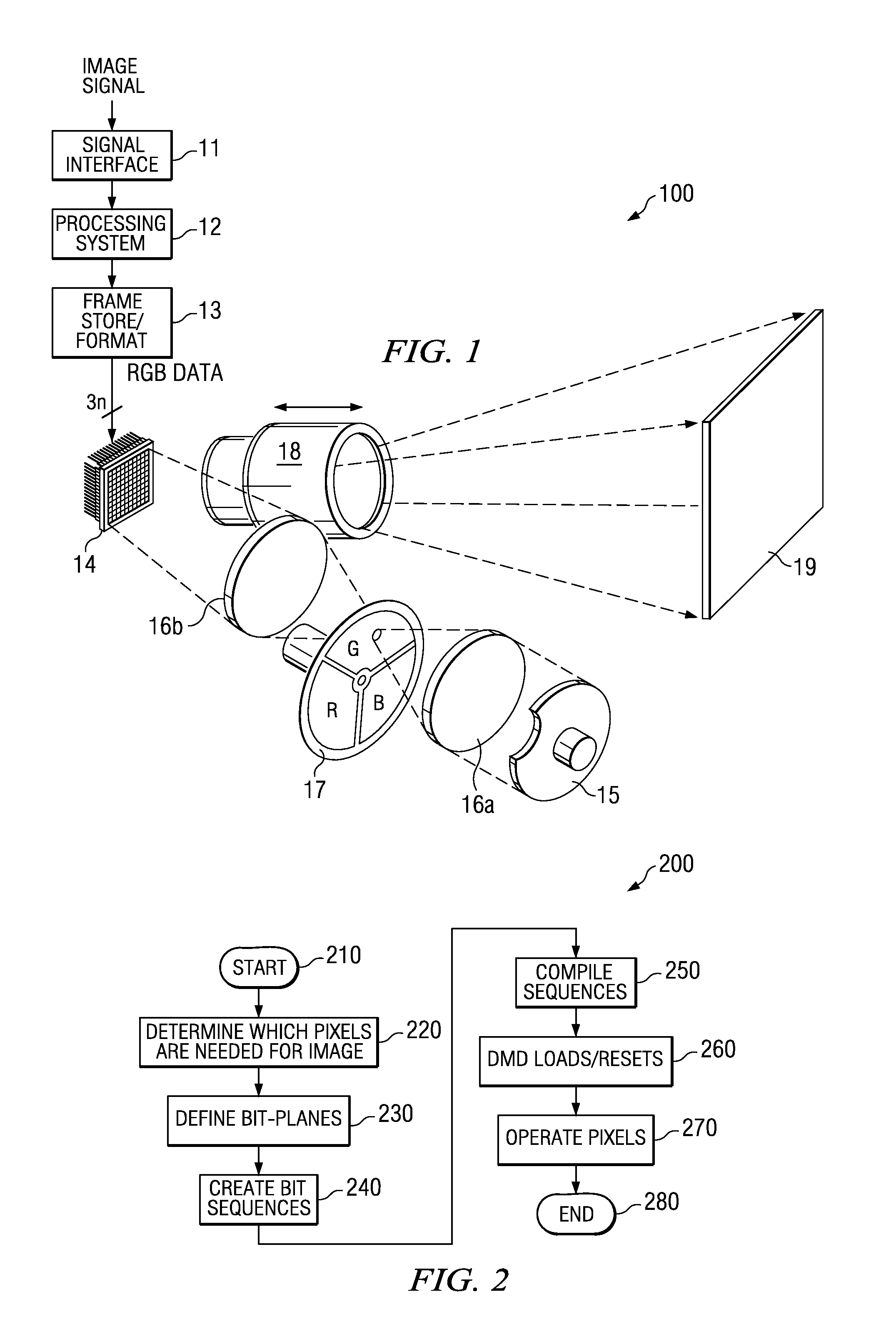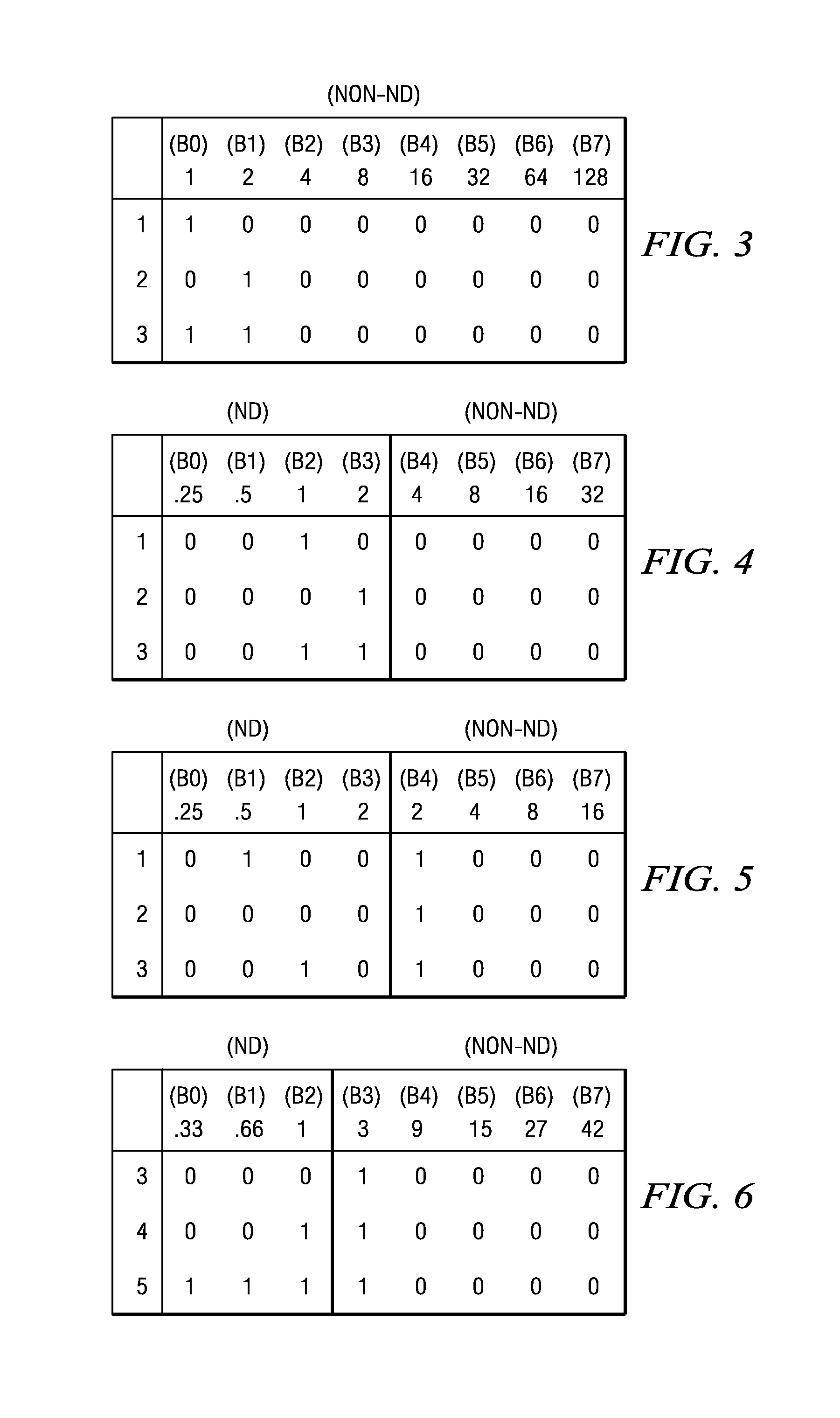Digital system and method for displaying images using shifted bit-weights for neutral density filtering applications
a digital system and neutral density filtering technology, applied in the field of digital display systems and methods, can solve the problems of loss of color performance, image quality and efficiency, and inability to use bits, etc., and achieve the effect of reducing the quality of the final imag
- Summary
- Abstract
- Description
- Claims
- Application Information
AI Technical Summary
Benefits of technology
Problems solved by technology
Method used
Image
Examples
Embodiment Construction
[0019]Referring initially to FIG. 1, illustrated is one embodiment of a projection visual display system 100, which uses an SLM having a DMD 14 therein to generate real-time images from an input signal. The input image signal may be from a television tuner, MPEG decoder, video disc player, video cassette player, PC graphics card, or the like. Only those components significant to main-screen pixel data processing are shown. Other components, such as might be used for processing synchronization and audio signals or secondary screen features, such as closed captioning, are not shown for simplicity.
[0020]In the illustrated embodiment, an input image signal, which may be an analog or digital signal, is input to a signal interface unit 11. In embodiments where the input signal is analog, an analog-to-digital converter (not illustrated) may be employed to convert the incoming signal to a digital data signal. Signal interface unit 11 receives the data signal and separates video, synchroniza...
PUM
 Login to View More
Login to View More Abstract
Description
Claims
Application Information
 Login to View More
Login to View More - R&D
- Intellectual Property
- Life Sciences
- Materials
- Tech Scout
- Unparalleled Data Quality
- Higher Quality Content
- 60% Fewer Hallucinations
Browse by: Latest US Patents, China's latest patents, Technical Efficacy Thesaurus, Application Domain, Technology Topic, Popular Technical Reports.
© 2025 PatSnap. All rights reserved.Legal|Privacy policy|Modern Slavery Act Transparency Statement|Sitemap|About US| Contact US: help@patsnap.com



